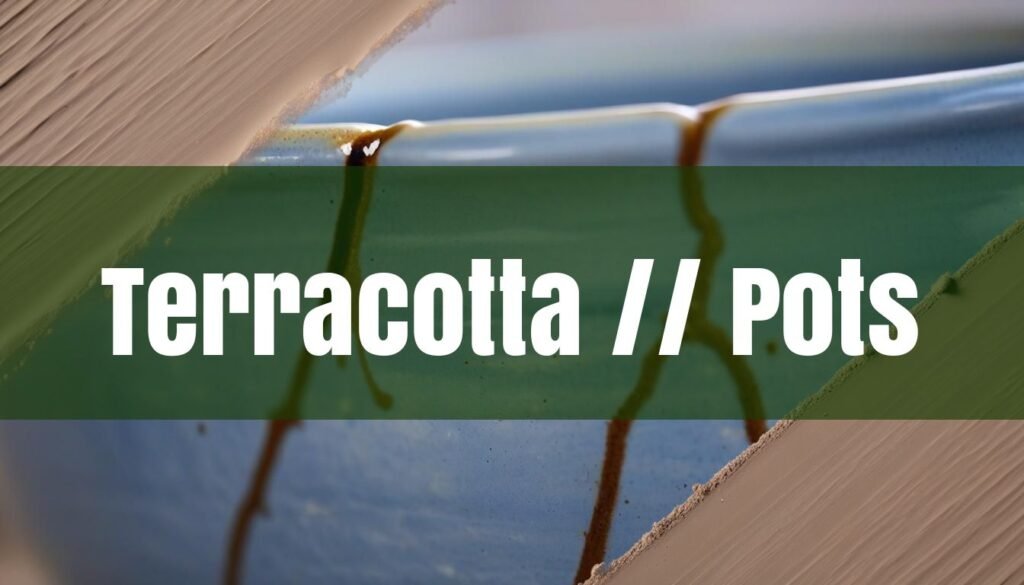Selecting the right type of paint for terracotta pots involves balancing aesthetic desires with the practical needs of durability and plant health. Terracotta, known for its porous nature, presents unique challenges and opportunities when it comes to painting. The ideal paint should not only adhere well to the clay surface but also withstand environmental factors like moisture, sunlight, and temperature fluctuations, especially if the pots are intended for outdoor use. Furthermore, understanding how paint affects the pot’s breathability is crucial for maintaining a healthy environment for plants.
Paint Options for Terracotta Pots
When choosing what type of paint to use on terracotta pots, several options stand out, each with its own set of advantages and disadvantages. Acrylic paints are a popular choice due to their vibrant colors, ease of use, and availability. They adhere well to terracotta, especially when a primer is used, and dry to a durable finish. Many acrylic craft paints are highly pigmented, ensuring bright and saturated colors that can be further enhanced with multiple coats. For added protection, a clear acrylic spray can be applied to seal the paint and protect the design from scratches and water damage. Latex paints are another viable option, known for their flexibility and water resistance. While they may require more coats than acrylics to achieve full coverage, they offer good protection against the elements. Spray paints provide a smooth, even finish and are excellent for covering large areas quickly. However, it’s essential to choose a spray paint that is designed for outdoor use and can withstand moisture and UV exposure. Specialized terracotta paints, such as Fusion Mineral Paint, are formulated to adhere to various surfaces and offer exceptional durability. Fusion Mineral Paint is known for its strong adhesion and suitability for both indoor and outdoor projects, requiring no additional sealant for a matte finish. More generally, you might be interested in what paint to use for ceramic pots. In addition, you may want to consider crafting planters and bonsai pots.
Preparing Terracotta Pots for Painting
Preparing terracotta pots properly before painting is essential for ensuring proper paint adhesion and a long-lasting finish. Start by removing any dirt, debris, or old stickers from the pot. Soaking the pot in warm water and scrubbing it with a stiff brush can help remove stubborn residue. If the pot has rough ridges, lightly sanding it with fine-grit sandpaper can create a smoother surface. Once the pot is clean and dry, apply a primer to both the inside and outside. Priming helps to seal the porous terracotta, preventing it from absorbing too much paint and improving adhesion. Clay pot sealers are particularly effective for this purpose. For convenience, a spray primer can be used in a well-ventilated area. After priming, apply the chosen paint in thin, even coats, allowing each coat to dry completely before applying the next. Foam brushes can help achieve a smooth finish, and thinning the paint with a small amount of water can make it easier to apply. Avoid painting the bottom of the pot to ensure proper drainage. Finally, seal the painted pot with a clear topcoat to protect it from the elements. Outdoor Mod Podge, clear acrylic sealers, and spray shellac are all effective options.
Creative Painting Techniques and Design Ideas
Creative painting techniques and design ideas can transform ordinary terracotta pots into unique and eye-catching pieces. One simple technique is to use painter’s tape to create geometric designs, such as stripes or color-blocked patterns. Multiple rubber bands can also be used to create sections for different paint colors, resulting in a dynamic, multi-colored design. For a rustic look, lightly sand the painted pot to give it a distressed appearance, allowing some of the natural terracotta color to show through. A thin wash of color, made by diluting paint with water, can also create a subtle, pleasing effect that allows the terracotta to shine through. Stencils can be used to paint labels for herb gardens or other decorative elements. For a celestial-inspired design, apply dots of metallic paint with a cotton swab and use a small artist’s brush to create a starburst effect. Ultimately, the design possibilities are endless, limited only by your imagination.
Impact on Breathability and Plant Health
Painting terracotta pots can affect their breathability and the health of plants, so it’s essential to take precautions to mitigate any negative effects. Terracotta’s porous nature allows for air and moisture exchange, which is beneficial for many plants. Painting the outside of the pot can slow down moisture release, but this is usually not a significant problem. However, sealing the inside of the pot can significantly reduce its breathability. While sealing the inside can prevent water from seeping through and damaging the paint, it can also interfere with drainage and potentially leach harmful chemicals into the soil. To balance these concerns, it’s generally recommended to avoid painting or sealing the inside of the pot, or to use a breathable sealant if sealing is necessary. For plants that prefer drier conditions, painting the outside of the pot can help retain moisture. Conversely, for plants that require well-draining soil, leaving the pot unpainted or using a breathable sealant is preferable. Some plants thrive better when terracotta is sealed, especially if they require high water levels or don’t react well to wetting and drying cycles.
Choosing the Right Sealants and Topcoats
Choosing the best sealants or topcoats is crucial for protecting painted terracotta pots from weather damage and wear, especially when used outdoors. A good sealant should prevent chipping, cracking, and fading of the paint, while also providing water resistance and UV protection. Acrylic sealers are a popular choice, as they are clear, easy to apply, and provide a durable finish. DecoArt’s Patio Paint is specifically designed for outdoor use and is water-resistant, making it an excellent option for flower pots. Spray shellac is another effective sealant, creating a smooth finish and adding a protective layer to seal the paint. It is important to apply the sealant to both the inside and outside of the pot to prevent water from seeping through the terracotta and damaging the paint job. Zinsser Shellac Spray has shown excellent results in holding up against the weather when coated on both the inside and outside of the pot. For added protection, multiple coats of sealant can be applied. By following these guidelines, you can ensure that your painted terracotta pots remain beautiful and functional for years to come.





